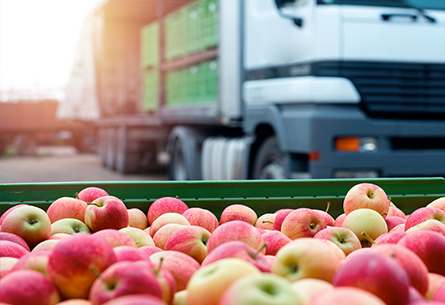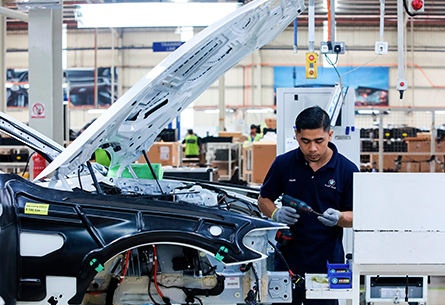From the experience of other countries in the region, such as Chile and Mexico, agricultural supply has been boosted, thanks to these two items. We also have a strategy to convert Colombia into a global player in this sector. We have also included vegetables and fruits in our Productive Transformation Program.
Colombian products with 0% tariff
- 99% of Colombian qualifying industrial and textile goods will become duty free upon the implementation of the FTA.
- 89% of Colombian agricultural goods will become duty free upon implementation of the FTA.
- Duties on many other tariff lines will be phased out over a period of up to 15 years, with some agricultural tariff rate quotas. While Colombia is expected to fill its new sugar TRQ, the FTA is likely to have a minor effect on U.S. imports and production of sugar and sugar containing products.

Key facts
The Colombia- U.S. FTA promotes trade in goods by eliminating tariff barriers, and by promoting the harmonization of technical regulations between both parties. As a result, FTA supports economic growth in both countries.
The FTA supports American jobs and improves American competitiveness since many American businesses use imports under this program as inputs to manufacture goods in the United States.
It is expected that the agreement will be effective in the second half of 2012, once Colombia accomplish all the agreement laws, regulations and policies. USTR is helping to accomplish these requirements as quickly as possible.
Colombia’s government is ensuring labor laws by promoting more protection rights for workers, to please and accomplish the strategic goals of the bilateral Labor Action Plan.
The USTR General Counsel, Tim Reif said that the FTA with Colombia is “well on the road” and is likely to be the next FTA to see implementation -GBD event on the pending FTAs.
United States Trade Representative Ron Kirk said “USTR has already started the work necessary to bring these agreements into force as soon as possible”- September 2011.
Colombia asked assistance in its labor to upgrade its workers rights from both the International Labor Organization and U.S. government. Mr. Kirk said:“It feels like they are absolutely meeting both the letter and spirit of what we asked them to do”.
Colombian products with 0% tariff
ATPDEA
The approval of the FTA extends the Andean Trade Promotion and Drug Eradication Act, ATPDEA, which was renewed until July 2013. The tariff preferences that many Colombian products have had shall be maintained with the FTA and therefore, sectors such as flowers, apparel, tobacco, cocoa, plastics and leather manufacturing, among others, shall be benefited.
In fact, both the ATPDEA preferences as well as the others that were agreed upon, shall be maintained over time, given that their persistence shall not be subject to unilateral U.S. Government and Congress decisions.
Agreements texts
The FTA is an agreement that generates opportunities for all Colombians, as it contributes to the creation of quality jobs and the improvement of the national economy’s performance. It benefits the exports sector, which will be able to sell its products and services under favorable conditions in the U.S. market.
The subjects that were negotiated were market access, in its two aspects (industrial and agricultural), intellectual property, investment regime, Government acquisitions, conflict resolution, competency, e-trade, services, environment and labor, among others.
The text of the agreement is embodied in one preamble and 23 chapters. The chapters cover aspects that reflect the general agreed-upon disciplines, many of which are common in multilateral and bilateral negotiations, and incorporate particular elements obtained by Colombia as well as by the United States in the negotiation.
For more details on the agreement, visit the Ministry of Trade, Industry and Tourism website at: http://www.tlc.gov.co/
FAQs about TLC
For Colombia, it was important to consolidate the preferences for ethanol that were included in the ATPDEA, as well as to open access for fuels generated from palm. The FTA consolidates the market for exports of fuel oil and so forth. We were also able to negotiate a flexible rule of origin which guarantees the ability to include raw material from countries not member to the FTA.
On the issue of coffee, we have cleared the issue of origin, since it is restricted to roasted coffee concessions obtained in the region, so as to promote the sale of Colombian beans. Thus, importation of only 150 tons of non-originating coffee is permitted. Colombia was able to negotiate a reservation to guarantee the permanence of the coffee contribution.
This product showed great opportunities in the U.S. market, thanks to ATPDEA tariff preferences. On this point, the FTA not only strengthened access which originally was only temporary, but it also substantially broadened access for this product. Was achieved a preferential quota of zero tariff for 4,000 tons of tobacco and a relief period of 15 years.
In cigarettes, we consolidated the ATPDEA preferences and achieved a standard which during the first few years will permit the mixing of raw materials from third countries, until the domestic supply reaches the required level.
On the contrary, rice was the most protected product, with a relief period to allow a progressive adaptation to the increased competition. The negotiating team defended it as the most sensitive item for the country. Protection was achieved for 19 years, with a 6-year grace period, during which the tariff will remain at its initial level.
The base rate remained at 80%. This same fee will be followed during the first 6 years of the FTA’s entry into force and only then will it become liberalized linearly. The combination of these instruments involves a threshold of effective protection for nearly 15 years. Additionally, a special agricultural quantity safeguard was established, which is applicable throughout the period of relief.
Colombia granted an import quota of 79,000 ton of U.S. white rice. If we compare this figure with the annual consumption in the country, which is estimated at 1,794,000 tons, we see that this only corresponds to 4%. Furthermore, domestic producers may participate in the revenue arising from the administration of the quota, as they agreed to use an entity that is utilized by the U.S. with Europe (Export Trading Company). This auction scheme generates important resources which will be open to Colombian rice.
The Government is aware of the importance of supporting the rice sector in becoming more competitive. Therefore, within the given economic support, certain internal support has been defined per hectare of rice.
For fresh chicken leg quarters will have a relief from a base rate of 164.4% and this will hold for 18 years, with 5-year grace period. For seasoned chicken leg quarters, the result of its higher economic value, it will receive a relief period of 18 years, with a grace period of 10 years, in which there will be no reduction in tariff. For this product, the tariff base is bound by the WTO at 70%.







